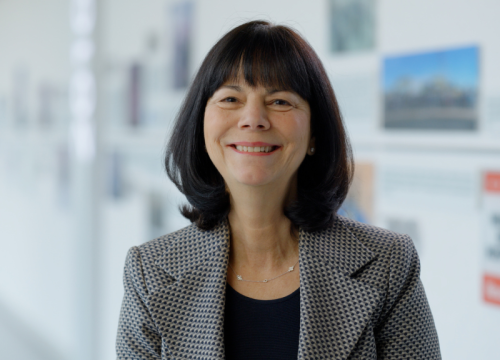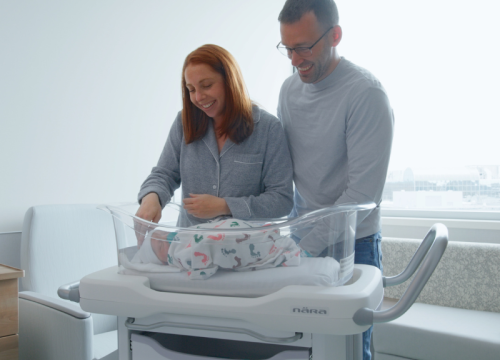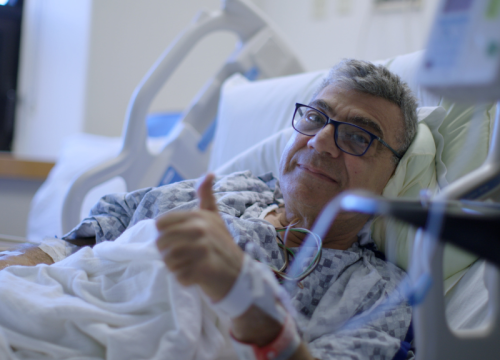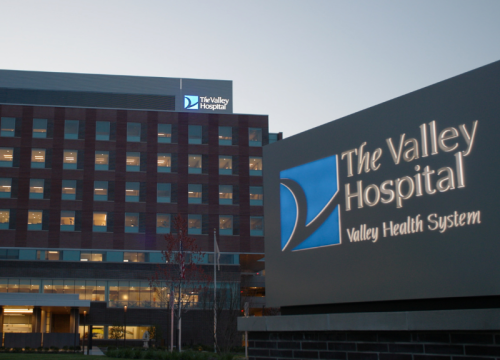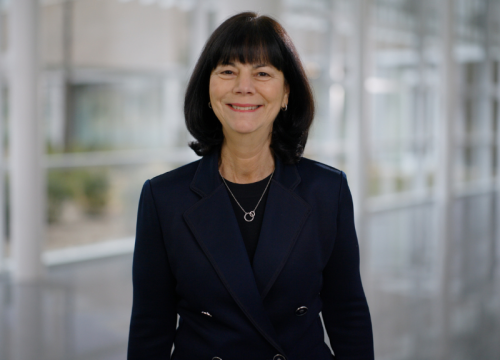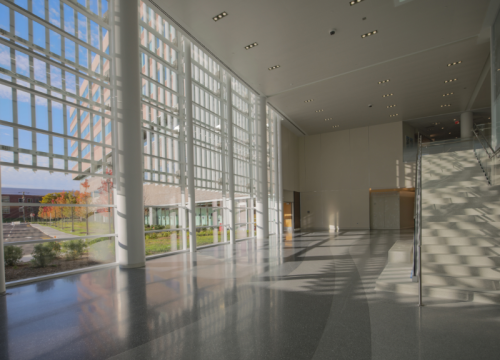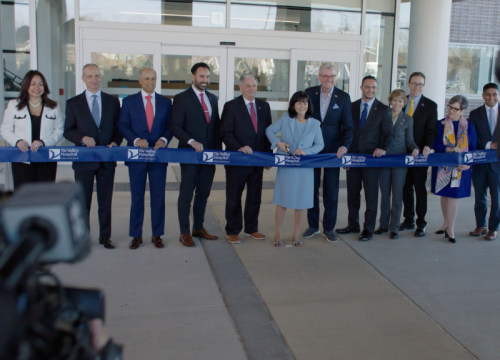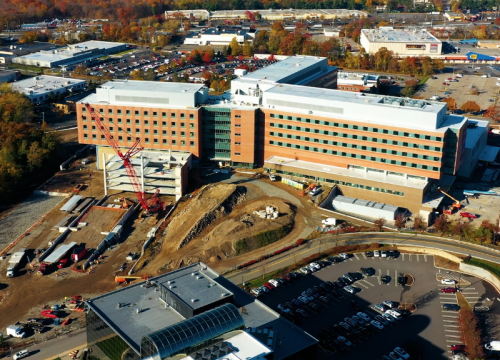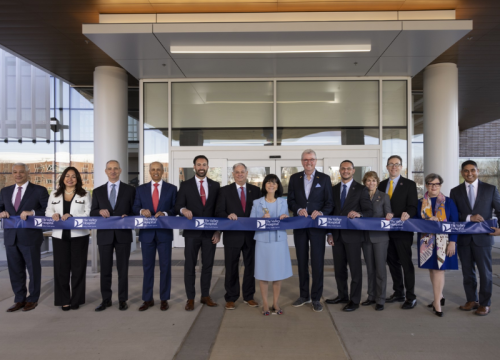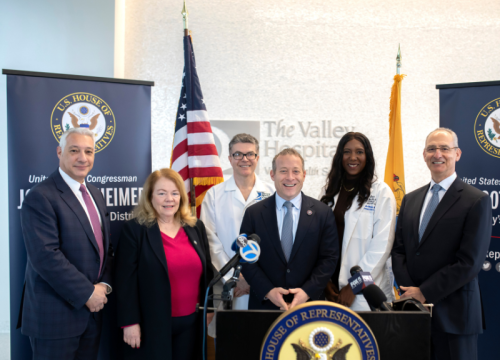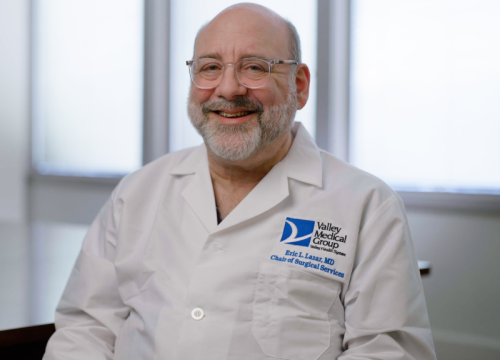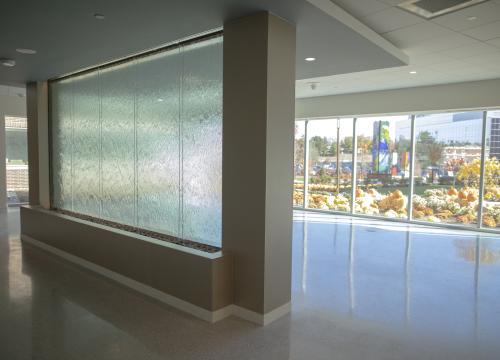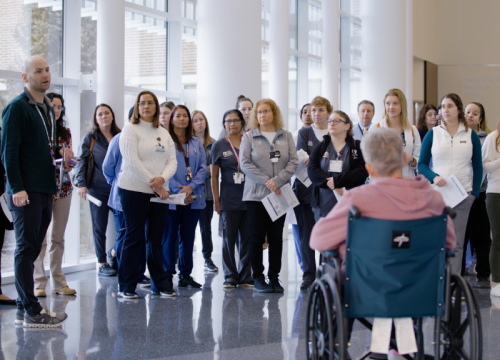The Valley Hospital is now open at 4 Valley Health Plaza in Paramus. (You may need to use 650 Winters Avenue for GPS.) All emergency care is now being provided at this location. Emergency care is no longer available at our Ridgewood campus.
Osteopathic manipulative therapy (OMT) is a manual (hands-on) treatment that can:
- Relieve pain
- Decrease stiffness and tension
- Improve range of motion
- Ease symptoms of many illnesses
- Promote healing after injury or illness
- Help prevent future injuries
It can be used alongside or instead of medications or surgery. For some people, it relieves symptoms even after medication or surgery haven’t worked.
During OMT, an osteopathic doctor (DO) carefully touches or moves different areas of your body using special techniques. These techniques can help with a wide range of illnesses and symptoms — from asthma and insomnia to migraines and back pain.
Another name for OMT is osteopathic manipulative medicine (OMM).
The Valley Approach to Osteopathic Manipulative Therapy
Valley is one of the few places where you can get OMT from an osteopathic physiatrist. (Physiatrists are doctors who specialize in physical medicine and rehabilitation.)
Osteopathic physiatrists have a deep understanding of the connections between your brain, nerves, bones, muscles and connective tissues. At medical school and during their extensive training, they learn to diagnose and treat each patient as a whole person.
They’ll use this expertise to provide exactly the OMT techniques that will work best for you. Depending on your needs and desires, they can also prescribe other treatments and at-home exercises that may help.
Osteopathic Manipulative Therapy Techniques at Valley
There are dozens of OMT techniques, each designed to help with different types of pain, stiffness, tightness, illness or injury. Osteopathic physiatrists at Valley are experts in the full range of these techniques. Some of the most commonly used are:
- Craniosacral therapy, in which your doctor uses gentle pressure to relieve tension in your head, neck and back
- Lymphatic pump techniques, in which your doctor uses quick pumping motions to rhythmically move different parts of your body
- Massage techniques, including effleurage (light, gentle strokes) and petrissage (deeper strokes, like kneading bread)
- Muscle energy technique, in which you push against light resistance and then your doctor stretches your muscles
- Myofascial release, a special kind of massage designed to relieve pain in the connective tissue around your muscles (called myofascia)
- Soft tissue release, in which your doctor applies pressure to, and then stretches, different parts of your body
- Spinal mobilization, in which your doctor applies pressure to your spine in ways that help increase your range of motion
- Strain-counterstrain, in which your doctor gently moves your stained, spasming or painful muscles to a more comfortable position
During your first appointment, your doctor will talk with you about what you’re experiencing and which techniques may help. Together, you’ll decide on a plan.
What to Expect During Osteopathic Manipulative Therapy
Your treatment plan will be based on your specific needs and preferences. Every patient is different, but most treatment plans fall into the following ranges:
- Most people need between two and five sessions of OMT
- Sessions are usually one or two months apart
- Most sessions last between 30 minutes and one hour
During a session, here’s what you can expect:
- Your doctor will use OMT techniques on different parts of your body, not only the problem area. That’s because OMT is based on the idea that your body’s systems are all connected. The cause of the problem might not be located in the area where you’re feeling symptoms.
- They’ll explain what they’re doing each step of the way. They’ll always ask before touching sensitive areas. (And you can always have someone else in the room with you if you’d like.)
- After treatment, you may feel a bit tired or sore for a day or so. You may also have a sense of emotional release, especially if you have a history of trauma.
- You can return to your normal activities the day after treatment. We generally recommend drinking plenty of water afterward.
How is OMT Different From Going to a Chiropractor?
People often wonder how getting OMT is different from going to a chiropractor. Both kinds of treatment use touch, movement, massage and other techniques to help the body heal. But OMT is different in some important ways:
- You always get OMT from an osteopathic doctor (DO). DOs are doctors who have gone through medical school, residency and other advanced training. At Valley, you’ll get OMT from a DO with advanced training in physical medicine and rehabilitation and osteopathic neuromusculoskeletal medicine. This gives them a deep understanding of the connections between your brain, nerves, bones, muscles and connective tissues.
- OMT can be easily combined with other treatments. For example, maybe you would also benefit from physical therapy, occupational therapy, speech and swallowing therapy, medications or other treatments. As a doctor who can prescribe these other treatments, your DO can direct a whole treatment plan if necessary.
Conditions Treated
- Asthma
- Back Pain
- Birth Trauma
- Carpal Tunnel Syndrome
- Constipation
- Chronic Obstructive Pulmonary Disease (COPD)
- Chronic Pain
- Fibromyalgia
- Foot Pain
- Frozen Shoulder
- Golfer’s Elbow
- Headaches
- Irritable Bowel Syndrome (IBS)
- IT Band Syndrome
- Menstrual Pain
- Migraines
- Narrow Palate
- Neck Pain
- Pain During Pregnancy
- Patellofemoral Pain Syndrome
- Pelvic Pain
- Plantar Fasciitis
- Post-Concussion Syndrome
- Post-Surgical Pain
- Rotator Cuff Tears
- Sacroiliac (SI) Joint Pain
- Sciatica
- Sleep Problems
- Temporomandibular Joint (TMJ) Pain
- Tennis Elbow
Why Choose Valley for Osteopathic Manipulative Therapy?
- An option beyond medication and surgery: OMT can often help even after medications and surgery haven’t worked. In some cases, it’s also a good option for people who can’t — or don’t want — to have certain surgeries or take certain medications. For example, OMT can relieve many kinds of back pain just as well as pain medications can.
- Help easing pain during pregnancy: Research has shown that OMT is an effective way to relieve back pain during pregnancy. And our team has extensive experience working with pregnant patients.
- Advanced OMT expertise: Most OMT providers are osteopathic doctors (DOs) who specialize in family medicine. At Valley, you can get OMT from a DO who specializes in physical medicine and rehabilitation and osteopathic neuromusculoskeletal medicine. This training gives them advanced OMT skills and expertise. They’ll draw on their expertise to determine precisely the right OMT techniques for you.


